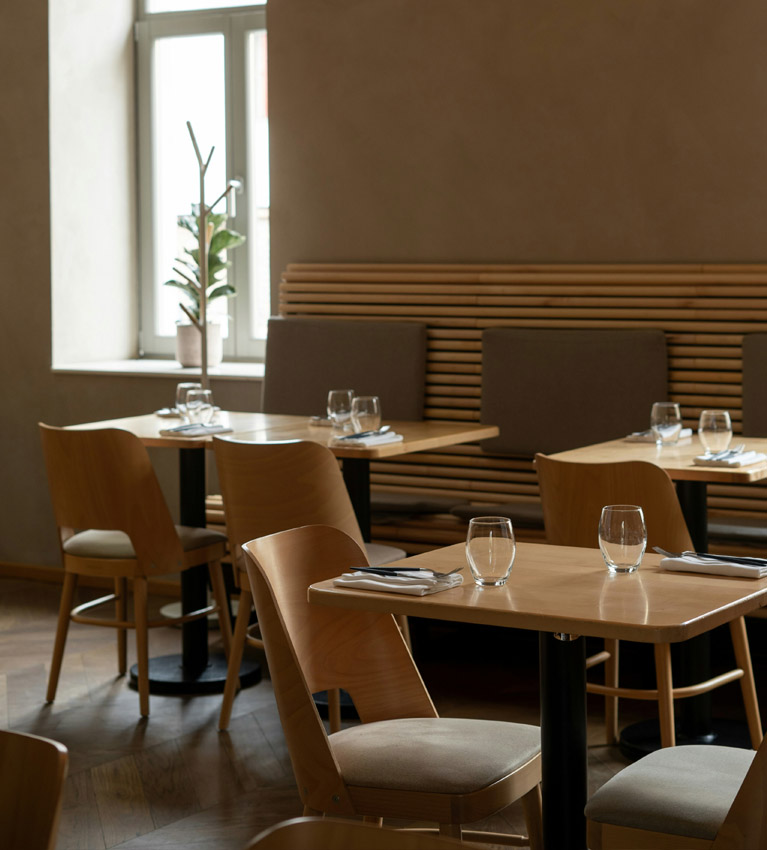
The Art of Recipe Adaptation

The Reality of the Catering Industry in Malta
November 26, 2023
Chefs and Homes: RECC’s Culinary Expansion
November 26, 2023Article by the Mediterranean Culinary Academy (MCA)
In the food world, the notion of a truly original recipe is as elusive as it is compelling.
In essence, there are no completely original recipes; rather, what we have are adaptations and reinterpretations that pay homage to the past while ushering in the present and future of cooking. But how does one adapt recipes without crossing the line into culinary disrespect? The answer lies in a delicate dance between tradition and innovation.
I once had a professor who used to tell us that "tradition is successful innovation." This profound statement underscores the idea that many food traditions have a base of making food either tastier or helping it preserve for longer. These traditions have stood the test of time precisely because they represent innovations that worked, adaptations born out of necessity or creativity.
To adapt a recipe successfully, one must first embrace the philosophy that there are no rigid boundaries when it comes to cooking. It's not about reinventing the wheel but rather about reimagining the familiar and adding your unique twist to it. The key to respectful adaptation is acknowledging the roots of a dish while allowing your creativity to flourish.
When respecting tradition in your recipe adaptations, you're essentially paying tribute to the ingenious culinary innovations of the past. These innovations were often driven by practical considerations, such as making the most of available ingredients or ensuring food longevity. For instance, techniques like pickling, smoking, or fermenting were traditional methods employed to preserve food in the absence of cold storage.
Moreover, embracing technology as a tool for adaptation is entirely acceptable and, in many cases, beneficial. In today's fast-paced world, we have access to an array of kitchen gadgets, appliances, and culinary techniques that can enhance and streamline the cooking process. Traditional recipes can be adapted to modern technology without sacrificing their authenticity.
The integration of technology can not only simplify the cooking process but also open new possibilities for creativity. It allows you to explore innovative cooking methods while still honouring the core principles of traditional recipes. Whether it's using precision sous-vide cooking for a perfectly tender steak or employing a high-speed blender to create smooth puree, technology can be harnessed to adapt and improve upon classic dishes.
In essence, respecting tradition in recipe adaptation involves recognizing the ingenuity of past culinary innovations and understanding that innovation is an integral part of culinary tradition itself. If the essence and integrity of a dish are preserved, adaptation can be a celebration of both tradition and innovation.
When embarking on the path of recipe adaptation, it's crucial to do so with cultural sensitivity. As our global society becomes increasingly interconnected, it's imperative to approach recipes from diverse culinary traditions with respect and understanding. Take the time to delve into the cultural significance of the dish you're adapting.
Explore its history, its role in specific occasions or ceremonies, and the stories it carries. Armed with this knowledge, you can ensure that your adaptations are not only delicious but also culturally respectful.
For instance, we at the Mediterranean culinary academy have adapted many Arabic and middle eastern recipes. What we have discovered through various discussions with participants is that it is difficult to get a hold of good quality pomegranate molasses so instead we substitute it with carob syrup as when cooked it has a similar flavour profile. The use of locally sourced ingredients while respecting these cultural tenets pays homage to the tradition while infusing your adaptation with a sense of place and cultural understanding.
Recipe adaptation also plays a vital role in preserving culinary heritage. Many traditional recipes, passed down through generations, are at risk of fading into obscurity as culinary landscapes evolve. As an adapter and innovator, you become a custodian of these culinary treasures, ensuring that they endure for future generations to savour and appreciate.
A good example of this is Massimo Bottura, I have had the pleasure of chatting with him after a lecture, in which he stated that his methodology of recipe adaptation is holding up traditions like a pane of glass, dropping in so it shatters and then picking up the pieces to rebuild it. This process is how he infuses his own emotional and nostalgic style of cooking. This can be observed in some of his most famous dishes such as “The crunchy part of a lasagne”.
Consider the traditional recipes that might be on the verge of being forgotten. These culinary gems are often closely tied to specific cultural or regional identities and are treasured pieces of culinary history. By adapting and sharing these recipes, you not only keep them alive but also allow them to evolve and find new relevance in today's culinary landscape.
It's a meaningful way to bridge the gap between tradition and innovation, ensuring that the past continues to inspire the future.
In the food world, the notion of a truly original recipe is as elusive as it is compelling.
From Nanna’s secret Imqarun recipe to the complex creations of renowned chefs, the dishes we savour often have roots that stretch back in time, passed down through generations or inspired by cultural traditions.
In essence, there are no completely original recipes; rather, what we have are adaptations and reinterpretations that pay homage to the past while ushering in the present and future of cooking. But how does one adapt recipes without crossing the line into culinary disrespect? The answer lies in a delicate dance between tradition and innovation.
I once had a professor who used to tell us that "tradition is successful innovation." This profound statement underscores the idea that many food traditions have a base of making food either tastier or helping it preserve for longer. These traditions have stood the test of time precisely because they represent innovations that worked, adaptations born out of necessity or creativity.
To adapt a recipe successfully, one must first embrace the philosophy that there are no rigid boundaries when it comes to cooking. It's not about reinventing the wheel but rather about reimagining the familiar and adding your unique twist to it. The key to respectful adaptation is acknowledging the roots of a dish while allowing your creativity to flourish.
When respecting tradition in your recipe adaptations, you're essentially paying tribute to the ingenious culinary innovations of the past. These innovations were often driven by practical considerations, such as making the most of available ingredients or ensuring food longevity. For instance, techniques like pickling, smoking, or fermenting were traditional methods employed to preserve food in the absence of cold storage.
Moreover, embracing technology as a tool for adaptation is entirely acceptable and, in many cases, beneficial. In today's fast-paced world, we have access to an array of kitchen gadgets, appliances, and culinary techniques that can enhance and streamline the cooking process. Traditional recipes can be adapted to modern technology without sacrificing their authenticity.
The integration of technology can not only simplify the cooking process but also open new possibilities for creativity. It allows you to explore innovative cooking methods while still honouring the core principles of traditional recipes. Whether it's using precision sous-vide cooking for a perfectly tender steak or employing a high-speed blender to create smooth puree, technology can be harnessed to adapt and improve upon classic dishes.
In essence, respecting tradition in recipe adaptation involves recognizing the ingenuity of past culinary innovations and understanding that innovation is an integral part of culinary tradition itself. If the essence and integrity of a dish are preserved, adaptation can be a celebration of both tradition and innovation.
When embarking on the path of recipe adaptation, it's crucial to do so with cultural sensitivity. As our global society becomes increasingly interconnected, it's imperative to approach recipes from diverse culinary traditions with respect and understanding. Take the time to delve into the cultural significance of the dish you're adapting.
Explore its history, its role in specific occasions or ceremonies, and the stories it carries. Armed with this knowledge, you can ensure that your adaptations are not only delicious but also culturally respectful.
For instance, we at the Mediterranean culinary academy have adapted many Arabic and middle eastern recipes. What we have discovered through various discussions with participants is that it is difficult to get a hold of good quality pomegranate molasses so instead we substitute it with carob syrup as when cooked it has a similar flavour profile. The use of locally sourced ingredients while respecting these cultural tenets pays homage to the tradition while infusing your adaptation with a sense of place and cultural understanding.
Recipe adaptation also plays a vital role in preserving culinary heritage. Many traditional recipes, passed down through generations, are at risk of fading into obscurity as culinary landscapes evolve. As an adapter and innovator, you become a custodian of these culinary treasures, ensuring that they endure for future generations to savour and appreciate.
A good example of this is Massimo Bottura, I have had the pleasure of chatting with him after a lecture, in which he stated that his methodology of recipe adaptation is holding up traditions like a pane of glass, dropping in so it shatters and then picking up the pieces to rebuild it. This process is how he infuses his own emotional and nostalgic style of cooking. This can be observed in some of his most famous dishes such as “The crunchy part of a lasagne”.
Consider the traditional recipes that might be on the verge of being forgotten. These culinary gems are often closely tied to specific cultural or regional identities and are treasured pieces of culinary history. By adapting and sharing these recipes, you not only keep them alive but also allow them to evolve and find new relevance in today's culinary landscape.
It's a meaningful way to bridge the gap between tradition and innovation, ensuring that the past continues to inspire the future.

Kurt Mifsud
A gastronome by profession, Kurt has worked in both fine dining as well as casual
restaurants after which he attended the University of Gastronomic Sciences in Italy where he
contributed to the organisation of the university’s first study trip to Malta. He led the Maltese delegation
to the First edition of the “Slow Food Youth Network International Conference”, at the Milan Expo.
Since founding The Mediterranean Culinary Academy in 2017, Kurt has overseen the development of the award winning monovarietal endemic extra virgin olive oil Bidni, seen over 4000 students pass through its doors, and helped in the organisation of hundreds of different culinary events.
For more information visit https://www.mcamalta.com/
Click here to see Horeca Issue 13 online



